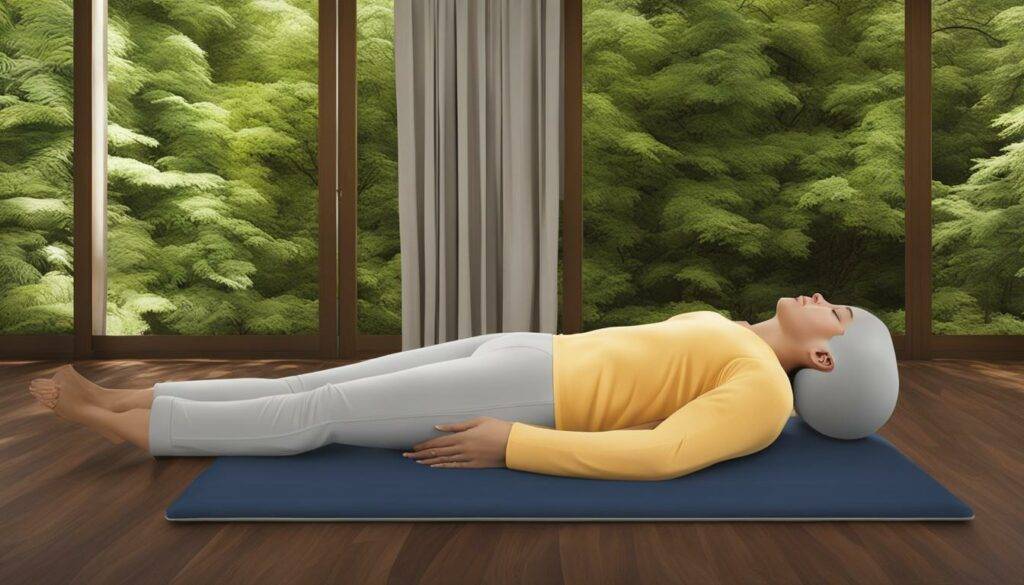Stress is an inevitable part of life. How you navigate and manage stress can greatly impact your overall well-being.
In this guide, we will explore effective habits for stress management that can help you find calm amidst the chaos.
From guided imagery to meditation, there are various techniques that can help soothe your mind and body.
Incorporating these habits into your daily routine can make a significant difference in how you handle stress and lead to a healthier, happier life.
Key Takeaways:
- Effective stress management habits are essential for maintaining overall well-being.
- Techniques such as guided imagery, meditation, and deep breathing can help reduce stress levels.
- Progressive muscle relaxation and engaging in leisure activities are also effective stress management strategies.
- It’s important to find what works best for you, as everyone responds differently to stress management techniques.
- Incorporate these habits into your daily routine to foster a more balanced and centered mindset.
The Power of Guided Imagery for Stress Relief
Guided imagery is a stress relief technique that taps into the power of your imagination to create a sense of calm and relaxation.
By visualizing yourself in a peaceful and tranquil setting, such as a serene beach or a lush forest, you can transport your mind to a place of tranquility. This technique can be practiced using pre-recorded sessions or by creating your own mental imagery.
Taking just a few minutes each day to practice guided imagery can provide immediate stress relief and help you cultivate a more peaceful state of mind.
In a world filled with constant stimulation and demands, the practice of guided imagery offers a much-needed escape.
By engaging all your senses in your imaginary scene, you can create a vivid and immersive experience that helps to quiet the mind and reduce stress.
Imagine feeling the warmth of the sun on your skin, hearing the gentle sound of waves crashing on the shore, and smelling the salty sea air.
By fully immersing yourself in this mental vacation, you can experience a sense of peace and relaxation that carries over into your daily life.
The Benefits of Guided Imagery:
- Reduces stress and anxiety
- Provides a mental escape from daily pressures
- Promotes relaxation and a sense of calm
- Enhances mindfulness and focus
- Improves overall well-being and quality of life
The beauty of guided imagery is that it is accessible to everyone and can be practiced anywhere, anytime.
Whether you’re feeling overwhelmed at work, dealing with a challenging situation, or simply in need of a mental recharge, guided imagery can be a valuable tool in your stress relief toolkit.
So, take a moment to close your eyes, breathe deeply, and imagine yourself in a place of serenity and peace. Let the power of guided imagery wash away your stress and bring you a renewed sense of calm and balance.
| Guided Imagery for Stress Relief | Benefits |
|---|---|
| Reduces stress and anxiety | Provides a mental escape from daily pressures |
| Promotes relaxation and a sense of calm | Enhances mindfulness and focus |
| Improves overall well-being and quality of life |
The Benefits of Meditation for Long-Term Stress Management
When it comes to managing stress effectively, meditation is a powerful tool that offers both immediate relief and long-term benefits.
By incorporating meditation into your daily routine, you can cultivate a more balanced and centered mindset, reducing the impact of stress on your overall well-being.
Meditation allows you to bring yourself into the present moment, helping you let go of ruminating thoughts about the past or worries about the future.
By focusing on your breath or practicing mindfulness, you can quiet the mind and create a sense of inner calm.
Regular meditation practice can help you develop a greater sense of self-awareness and emotional resilience, enabling you to navigate stressful situations with greater ease.
Research has shown that meditation can have a positive impact on various aspects of mental health. Studies have found that meditation can reduce symptoms of anxiety, depression, and post-traumatic stress disorder (PTSD).
It can also improve sleep quality, enhance cognitive function, and promote overall feelings of well-being.
By incorporating meditation into your stress management routine, you can reap these benefits and cultivate a greater sense of peace and happiness in your life.
To get started with meditation, find a quiet and comfortable space where you won’t be interrupted. Sit in a relaxed position, close your eyes, and focus your attention on your breath or a specific object.
As thoughts arise, simply observe them without judgment and gently bring your focus back to your breath. Start with just a few minutes of meditation each day and gradually increase the duration as you become more comfortable.

The Benefits of Meditation:
- Reduces symptoms of anxiety, depression, and PTSD.
- Improves sleep quality and cognitive function.
- Cultivates self-awareness and emotional resilience.
- Promotes overall feelings of well-being.
Incorporating meditation into your stress management routine can have a profound impact on your life. By taking a few moments each day to cultivate inner peace and stillness, you can develop the tools necessary to navigate stress and lead a more balanced and fulfilling life.
Progressive Muscle Relaxation: Releasing Tension and Easing Stress
When it comes to managing stress, finding effective techniques to release tension from your body is essential. Progressive muscle relaxation is a powerful practice that can help you achieve just that.
This technique involves systematically tensing and then relaxing each muscle group in your body. B
y consciously focusing on each muscle group, starting from your forehead and working your way down to your toes, you can bring awareness to areas of tension and learn how to release it.
Regular practice of progressive muscle relaxation can lead to a greater sense of relaxation and ease in your body.
This technique allows you to connect with your physical sensations and let go of stress that may be stored in your muscles.
The Benefits of Progressive Muscle Relaxation:
- Reduces muscle tension and stiffness
- Enhances body awareness
- Promotes relaxation and calmness
- Improves sleep quality
- Helps alleviate symptoms of anxiety and depression
To practice progressive muscle relaxation, find a quiet and comfortable space where you won’t be disturbed. Close your eyes and take a few deep breaths to relax your mind.
Begin by tensing the muscles in a specific area of your body, such as your forehead, for about 5 to 10 seconds. Then, release the tension and allow the muscles to fully relax. Move on to the next muscle group, working your way down your body.
| Muscle Group | Tension | Relaxation |
|---|---|---|
| Forehead | Tense your forehead by raising your eyebrows | Release the tension and let your forehead become smooth |
| Jaw | Clench your jaw tightly | Relax your jaw and let it hang loose |
| Shoulders | Raise your shoulders up towards your ears | Allow your shoulders to drop and release any tension |
| Hands | Clench your fists tightly | Open your hands and let them rest in a relaxed position |
Continue this process for each muscle group in your body, paying attention to any sensations or changes you may feel along the way.
As you practice progressive muscle relaxation regularly, you’ll start to notice the benefits extending beyond the practice itself, leading to a more relaxed and stress-free life.

The Power of Deep Breathing for Quick Stress Relief
When stress levels rise, finding a quick and effective way to calm your mind and body is essential. Deep breathing exercises offer a simple yet powerful solution for reducing stress in just a few minutes.
Deep breathing involves taking slow, deliberate breaths, fully filling your lungs with air, and then exhaling slowly.
This technique activates the body’s relaxation response, helping to lower heart rate and blood pressure while promoting a sense of calm and well-being.
One effective deep breathing exercise is the 4-7-8 technique.
To practice this exercise, inhale deeply through your nose for a count of 4, hold your breath for a count of 7, and then exhale slowly through your mouth for a count of 8.
Repeat this cycle several times, focusing on the sensation of your breath entering and leaving your body. As you do so, allow your mind to let go of stressful thoughts and tensions.
The Benefits of Deep Breathing:
- Reduces stress and anxiety levels
- Soothes the nervous system and promotes relaxation
- Improves focus and concentration
- Enhances overall well-being and mental clarity
Incorporating deep breathing exercises into your daily routine can provide immediate stress relief and long-term benefits for managing stress.
Whether you practice deep breathing in the morning to start your day on a calm note or use it as a tool to regain composure during a busy day, this technique can help you navigate stressful situations with greater ease and resilience.

Conclusion
As you reach the end of this friendly guide on stress management, remember that developing healthy habits is key to leading a balanced and happier life.
By incorporating proven stress management habits into your daily routine, you can effectively manage stress and improve your overall well-being.
Discovering what works best for you is essential, as stress relief techniques vary from person to person.
Explore different strategies, such as guided imagery, meditation, progressive muscle relaxation, and deep breathing, to find the ones that resonate with you and bring you the most relief.
Remember that managing stress is an ongoing journey, and it requires commitment and practice. By making stress management a priority and implementing healthy habits into your life, you can create a solid foundation for resilience and inner peace.
So take the time to prioritize self-care, nurture your mind and body, and embrace these stress management tips and habits. You deserve a life filled with tranquility, joy, and fulfillment.
Start today and pave the way for a healthier, happier you!
FAQ
What are some effective stress management techniques?
Some effective stress management techniques include guided imagery, meditation, progressive muscle relaxation, deep breathing, going for a walk, hugs, aromatherapy, creativity, a healthy diet, stress relief supplements, leisure activities, positive self-talk, yoga, gratitude, exercise, evaluating priorities, social support, and eliminating stressors.
How does guided imagery help with stress relief?
Guided imagery is a powerful stress relief technique that allows you to take a mental vacation. By imagining yourself in a peaceful setting, such as a beach, and engaging all your senses in this imaginary scene, you can experience a sense of relaxation and calm.
What are the benefits of meditation for long-term stress management?
Meditation is not only a short-term stress reliever but also a long-term stress management tool.
By practicing meditation, whether through focusing on your breath or practicing mindfulness, you can bring yourself into the present moment and reduce ruminating thoughts about the past or worries about the future.
How does progressive muscle relaxation help in easing stress?
Progressive muscle relaxation is a technique that involves tensing and then relaxing each muscle group in your body.
By systematically working through your muscles, starting from your forehead and moving down to your toes, you can become more aware of tension and learn to release it.
How does deep breathing help with quick stress relief?
Deep breathing exercises are a simple yet effective way to calm your body and mind.
By focusing on your breath and taking slow, deep breaths, you can activate your body’s relaxation response and reduce stress in just a few minutes.
What are some proven stress management habits?
Some proven stress management habits include incorporating techniques such as guided imagery, meditation, progressive muscle relaxation, deep breathing, and other stress relieving activities into your daily routine.
It’s important to explore different strategies and find what works best for you.




























































